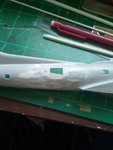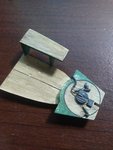- Thread starter
- #41
No worries friend, this too is one of my favorite aircraft and is perhaps why I am making the effort to make many details that will not be easily seen. There is just something rewarding about learning how the real aircraft were put together and how all the components worked in unison by building a replica of it.These are very interesting questions, I declare myself ignorant, but I'm sure more than a friend here, will help us learn more about "La Fortaleza Voladora" (it's my favorite bomber), so I'll keep an eye on the comments.
Saludos and thanks for your comment
Chad



